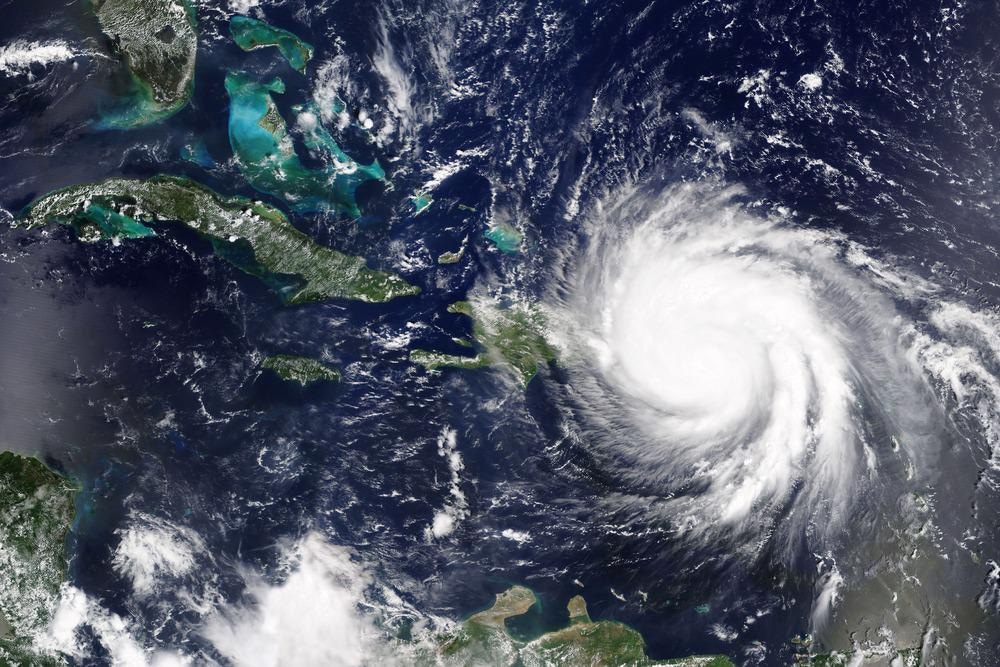US robotics company Saildrone has recently captured the first-ever video footage from the inside of a category four hurricane with one of their latest autonomous vehicles designed for ocean surveillance. A Saildrone USV made the recording during Hurricane Sam on September 30th 2021.

Image Credit: lavizzara/Shutterstock.com
The vessel that captured the footage inside Hurricane Sam is the latest uncrewed, remote-controlled aquatic robot to be sent on ocean data gathering missions by Saildrone. These so-called unmanned surface vehicles (USVs) are gathering valuable scientific data to help researchers understand violent storms better and improve forecasting models.
Collecting Ocean Data
Occasionally, hurricane winds undergo a phenomenon referred to as “rapid intensification.” When this happens, wind speeds pick up very quickly, sometimes in a matter of just hours. Rapid intensification in storms is a serious threat to coastal communities, causing flash floods and other extreme weather events.
Unfortunately, it is challenging to understand what is happening inside these massive weather systems when they are at their most extreme. Flying a manned aircraft or even a drone into a strengthening hurricane is almost impossible, and manned vessel missions into such storms would be far too risky for crews on board.
Autonomous vehicles such as USVs can help to overcome these risks and provide valuable data that will help meteorologists better understand how hurricanes rapidly strengthen. Improving understanding can contribute to the design and implementation of strategies aimed at protecting fragile coastal communities. Extreme weather events like hurricanes will be increasingly likely in the future due to climate change, so establishing how they work is vitally important.
In general, USVs employed on ocean surveillance missions can add climate and weather data to our collective knowledge that was previously unavailable, improving the overall accuracy of forecasting and modeling capabilities.
SD 1045 Inside Hurricane Sam 1400UTC Sept 30 2021
Video Credit: saildrone/YouTube.com
Why Use Aquatic Robots to Gather Ocean Data?
Saildrone's uncrewed vessels are constructed to high specifications so that they can withstand hurricane-force winds and massive waves. The observations and measurements carried out by these USVs will help researchers who can infuse hurricane models with the new data, improving the understanding of how storms develop.
The froth and spray in the center of a hurricane – where the boundary between water and air becomes incredibly volatile – had never before been seen until the Hurricane Sam footage was captured. Studying these images can help scientists across a broad range of disciplines establish exactly what is happening inside hurricanes and improve understanding of how energy and heat are exchanged between the ocean and the air.
How do Saildrone USVs Work?
These vessels are an updated version of Saildron's previous USV. To withstand the toughest conditions, the design was improved to make the aquatic robot smaller, shorter, and more compact. As well as this, the previous design's two instrument-carrying arms were reduced to one. These changes enabled the design to face winds up to 115 mph.
Saildrone USVs In Operation
Saildrone USVs have already been deployed on NOAA (National Oceanic and Atmospheric Association) missions around Alaska and Antarctica (where a Saildrone vessel became the first USV to circumnavigate the continent). Collectively, Saildrone USVs have sailed over 500,000 miles.
Five updated designs were deployed in the Atlantic "hurricane belt" in Summer 2021, including the vessel that captured footage inside Hurricane Sam (SD 1045). These will continue to operate throughout the hurricane season this fall, with operators working on getting USVs into the midst of even more hurricanes.
Saildrone also works with NASA, the US Coast Guard, and several universities to bring its autonomous vehicles technology to even more sectors.
Click here to see a full list of available Underwater Robots.
References and Further Reading
Fox, A. (2021) 'Saildrone' Captures First-Ever Video From Inside a Category 4 Hurricane. Smithsonian Magazine. Available at: https://www.smithsonianmag.com/smart-news/saildrone-captures-first-ever-video-from-inside-a-category-4-hurricane-180978836/
McFarland, M. (2021) These boat drones are designed to sail directly into the eye of a hurricane. CNN. Available at: https://edition.cnn.com/2021/09/10/tech/saildrone-hurricane/index.html
Disclaimer: The views expressed here are those of the author expressed in their private capacity and do not necessarily represent the views of AZoM.com Limited T/A AZoNetwork the owner and operator of this website. This disclaimer forms part of the Terms and conditions of use of this website.